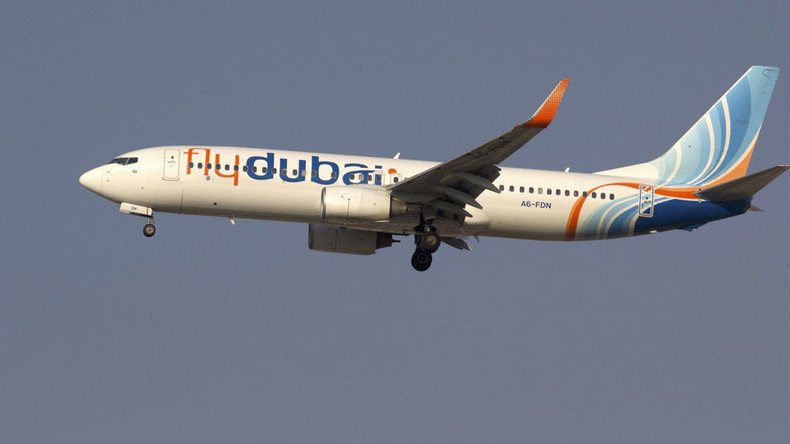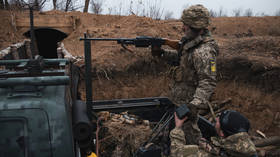Pilot error, lost fuel, terrorism? Experts discuss possible causes of Flight FZ981 crash

Experts are now examining the available information as to what caused the crash of Flydubai Flight FZ981 in the Russian city of Rostov-on-Don killing all 62 passengers and crew on board.
The flight was en-route from Dubai on Saturday morning and crashed during its second landing approach amid poor weather conditions.
RT discusses the possible causes of the accident with a group of aviation and security experts.
Aeroflot pilot Ivan Trukhanov
Trukhanov has 22,000 recorded flight hours; 15 years experience with Boeing 737 aircraft.
RT: Strong winds and heavy rains are cited as possible reasons for the plane crashing. Were the weather conditions so bad that it was too dangerous to land the jet safely?
Ivan Trukhanov: In my opinion, visibility was good although there was high wind. But wind direction was the same as the runway direction. Maybe crosswinds can cause some confusion for the pilot, but a direct headwind is no problem for any pilot, especially one who has over 5,000 hours of flight experience.
I had one landing in Moscow five years ago with the same conditions. The wind was normal, but the turbulence on the final (approach to landing) was extreme. The plane was out of control; you can’t do anything. The question is why they made a first attempt and then hold two and a half hours. Why didn’t they make a second attempt to try again and in this case they could make a decision earlier to go to an alternate (airport). That is the question. I think in the second attempt they had the same turbulence and couldn’t control the plane… but we have to await information from the black box.
RT: The aircraft appears to be descending at a very fast rate of speed and at a steep pitch. What can you tell us about that?
IT: The normal so-called glide slope for landing is 3 degrees, but as we can see in the video, the slope was about 30 degrees, maybe more, maybe 40 degrees. That’s not glide slope but the way to crash. It is strange because the normal glide slope is 3 degrees for smooth landing and descent.
Independent aviation analyst, Alex Macheras
RT: We hear different expert opinions on whether the plane could have run out of fuel. What's your view?
Alex Macheras: It’s difficult to say (if the aircraft ran out of fuel) because at this stage it is simply too early. We don’t have the facts to know whether or not this aircraft had a lot of extra fuel on board. I will say from what we know in terms of past crashes it is unusual that this aircraft was flying for so long in terms of two extra hours circulating, while other aircraft in the area were diverting much sooner or landing safely.
What’s interesting is that an Aeroflot aircraft had three failed attempts at landing in between the FlyDubai’s first attempt, which, as we know was unsuccessful, and its second attempt that ended in a crash. So there was more activity at this airport at this time from other inbound aircraft, but the majority of them were diverting. It ultimately comes down to the pilot’s decision and if wanted to continue and try again ultimately the decision would have lain with him.
We know from the video footage that this was a harsh, fast, almost vertical fall to the ground.
RT: Some say the weather was too bad for a safe landing, others that it was within permitted limits. In your opinion, was it possible to avoid this crash?
AM: When looking at past crashes and incidences like this, it’s usually a chain of events. So if there is bad weather it could also time with how the flight crew reacted to that weather. And then consequently things happen as a knock-on effect.
We’ve seen a report: nothing too dangerous that would close the airport, so the airport was well within its rights to be taking arriving aircraft. However, we know it was bad, and Rostov isn’t the easiest airport to land at on an ordinary day. Pilots and flight crew are advised while landing at the airport to expect severe turbulence and possible wind shear in the final moments before touchdown, and that’s on a regular day so we can imagine this could have been quite harsh conditions last night when we know they were being hampered by windy, rainy weather that wasn’t too good.
DETAILS: More than 100 passengers could have been on board https://t.co/bfeuoVdREnpic.twitter.com/NJ9xPvtgDg
— RT (@RT_com) March 19, 2016
RT:The plane crashed just on the edge of the runway, yet we see from the video it came down almost vertically. What does this tell us? It was clearly over the airport at the time.
AM: We know from the video footage that this was a harsh, fast, almost vertical fall to the ground. Now, it’s not confirmed, but flight radar data available online suggests that this aircraft was trying to take off again – in other words, aborting the landing a second time. They say that it’s on that second attempt to abort landing and to initiate a go-around that this crash happened. As the aircraft tried to climb back into the sky it fell violently and crashed.
Charles Shoebridge, Security analyst
Shoebridge is also a former UK counter terrorism intelligence officer.
RT: The aviation authorities have already ruled out foul play as a cause of the crash. How can they be so certain, so soon?
Charles Shoebridge: ... It’s interesting at this stage that straightaway terrorism is being ruled out largely, and I think that given the circumstances of the crash, although at this early stage - without any analysis of the black boxes - it might be considered, if you like, premature to rule out terrorism.
Certainly, I think, in this particular set of circumstances there are more compelling indications at this stage, given the weather and... the holding pattern the plane had for some two hours without any distress calls being given. But there are some interesting and unusual circumstances for this accident as it is being currently reported.
RT: The plane crashed just on the edge of the runway, yet we see from the video it came down almost vertically. What does this tell us? It was clearly over the airport at the time.
UPDATE: 55 passengers,7 intl crew members killed as #Boeing-737 crashes in Southern Russia https://t.co/bfeuoVdREnpic.twitter.com/5trmC61fRx
— RT (@RT_com) March 19, 2016
CS: If this video is genuine, and there is nothing to suggest that it isn’t, this suggests something more than just a landing that has simply gone wrong…. Normally, you would have a much shallower line of attack, if you like, a descent into an airport. This seems to be confirmed that this descent was at a very sharp angle as confirmed by the radar data that’s publicly available and is on the internet.
It’s interesting at this stage that straightaway terrorism is being ruled out largely...
At the moment, most of the world’s media are reporting that this was a landing attempt that went wrong, and that may be genuinely true. But it does seem strange that the plane should just literally fall out of the sky on this occasion. And that may suggest some degree of mechanical defect; it may even suggest something as – with over two hours of a holding pattern after a long journey – that the plane may even have run out of fuel. It may be a possibility of something as simple as that. Or… perhaps human error involving the pilots or indeed even of those managing the airport who decided to allow (a landing) despite the weather.
Dr. Richard Bloom, Aviation Security expert
RT: Who is ultimately responsible for making the decision to land an aircraft in severe weather conditions?
Dr. Richard Bloom: Ultimately the decision is made by the pilot… who takes different kinds of information and come to a decision on whether to tray and land or not. And the pilot in this case may have made the exactly right decision but something might have happened in that process of landing – a new piece of information that hadn’t been collected, something that was unexpected, maybe very low probability – so even the right decision might have led to the tragedy.
The statements, views and opinions expressed in this column are solely those of the author and do not necessarily represent those of RT.












